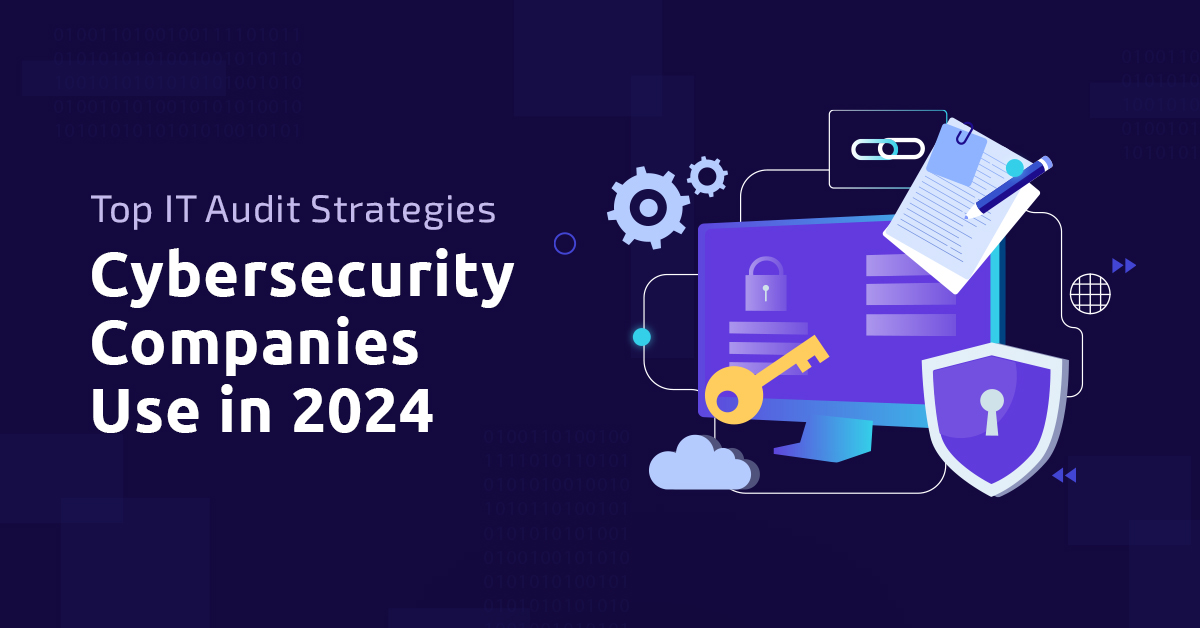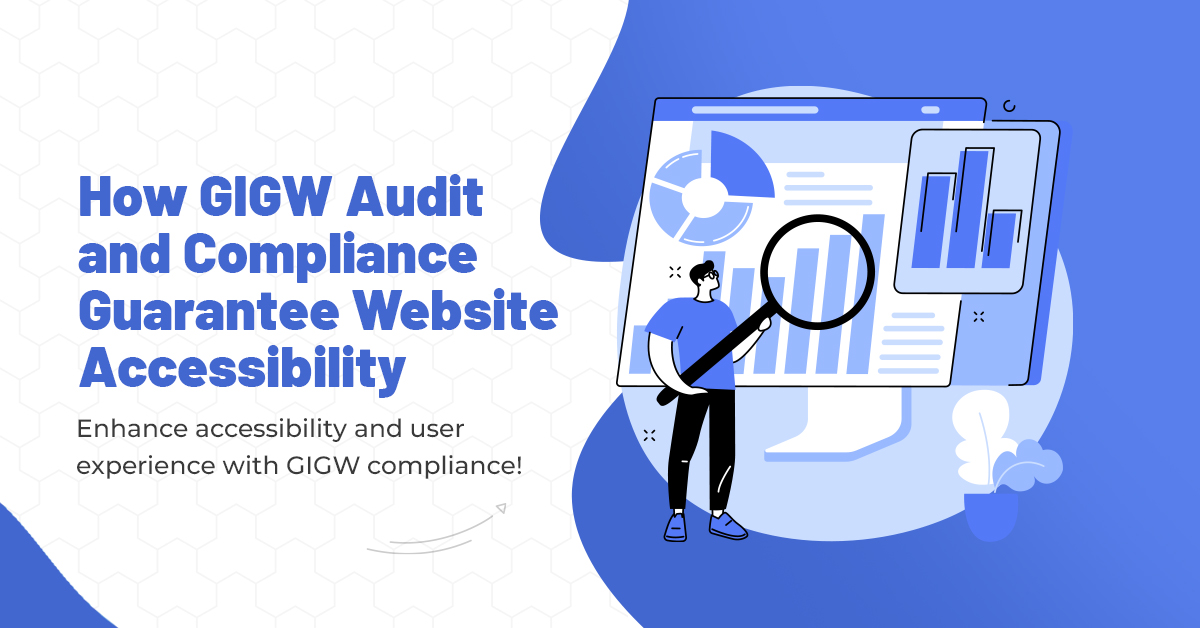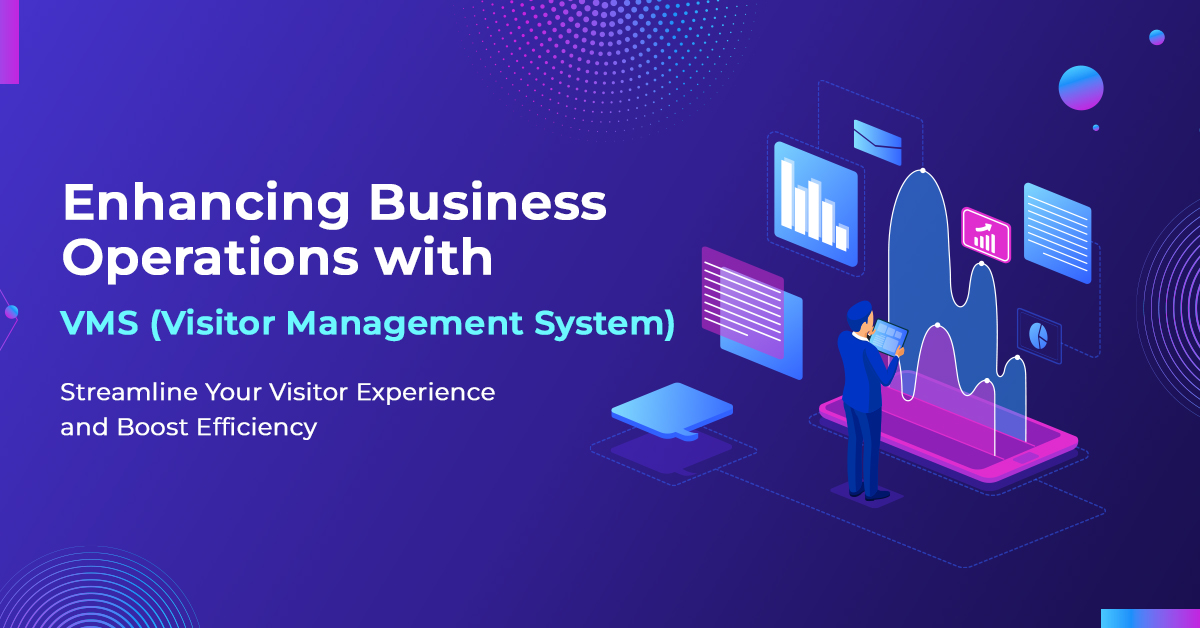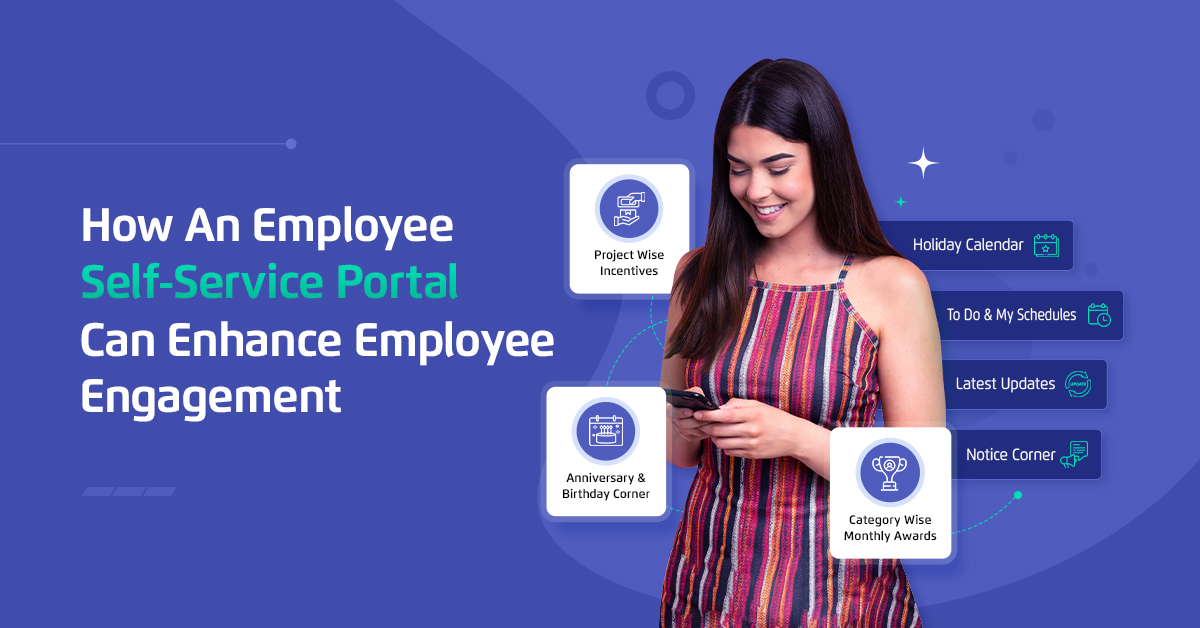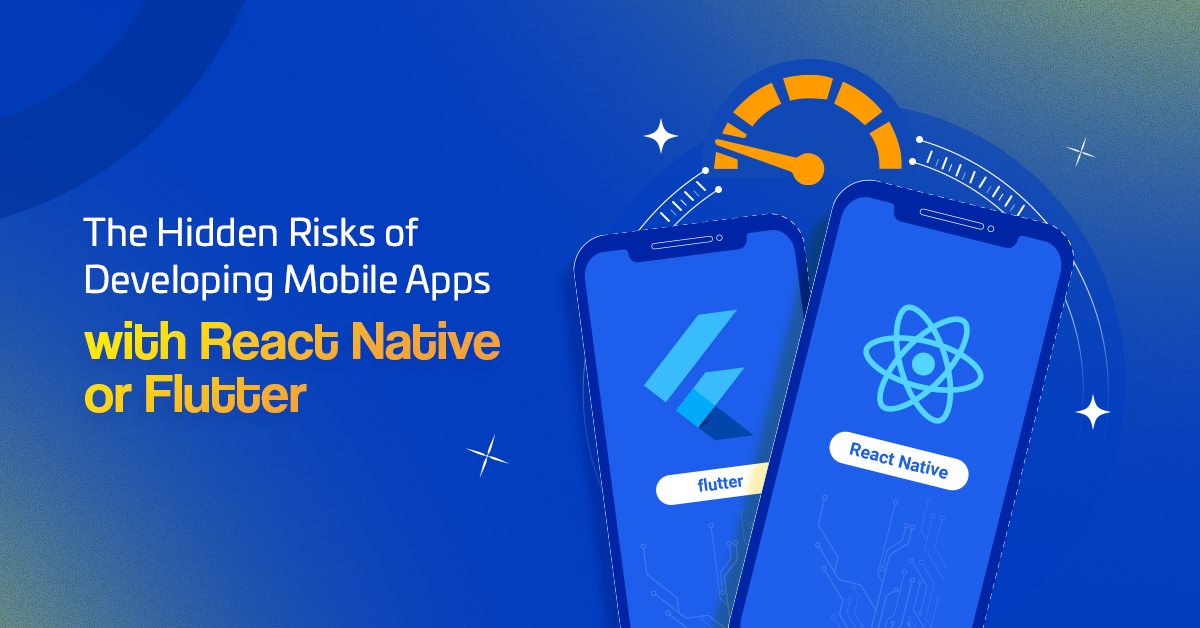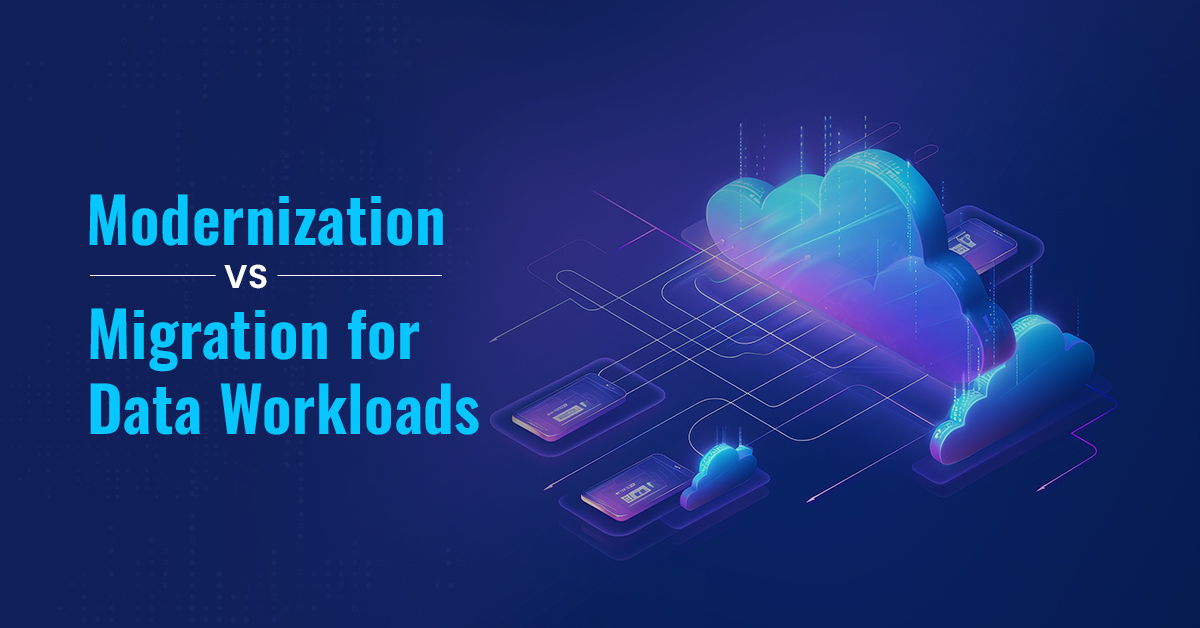
Cloud migration involves moving digital assets like data, apps, and infrastructure to a cloud environment. In particular, data and data platforms are essential for application, analytical, or AI/ML workloads; thus, it’s common to migrate existing data from other platforms, including on-premises or even other cloud providers. For most organizations, determining what to do with their data when moving it to a new platform is the first challenge.
Should you do a simple migration, also known as lift-and-shift? Or should you consider modernizing the platform and building an entirely new solution that can work with the latest modern cloud technologies? In this post, we will discuss the modernization and migration approaches for data workloads.
Migration vs. modernization: What’s the difference?
Generally speaking, migration involves moving your data to the cloud. The most common migration processes typically fall into two categories:
-
On-premises to cloud migration: Shifting operations from local servers and data centers to cloud providers.This is a common migration use case, as businesses look to take advantage of cloud benefits like scalability, flexibility, and cost savings.
-
Cloud-to-cloud migration: Switching between cloud providers to gain additional value in terms of innovation, functionality, cost, and partnership.
Cloud modernization, on the other hand, is a strategy for transforming existing applications, data, and infrastructure to take better advantage of the benefits offered by cloud computing. Having a unified, flexible, scalable and cost effective data platform for managing and analyzing data is a crucial part of any company’s success. For example, fully managed database services can enhance the performance, scalability and reduce the overall cost of operation in the cloud. Cloud-first data lakes and data warehouses enable modern analytics capabilities, providing better insights into customer data.
Typically, customers consider cloud modernization when their business strategies strive to achieve digital transformation, leverage advanced cloud services, support continuous improvement and development, and unlock the potential of emerging technologies like generative AI.
You might consider cloud modernization, for example, if you are looking to:
-
Rethink and rebuild applications and infrastructure using cloud-native architectures like serverless data platforms, microservices, and containerization.
-
Utilize managed services like serverless databases, data lakes, machine learning platforms, analytics tools, and cloud operations to automate tasks, unlock new functionalities, and drive faster time-to-market.
-
Adopt DevOps principles and CI/CD practices to iterate and optimize your cloud environments.
-
Provide a strong foundation for developing and deploying your gen AI use cases with scalable data management, sufficient computing power, and pre-built AI services.
-
Reduce cost, improve security and compliance posture, and increase reliability & productivity via managed offerings vs self managing databases
Critical migration decision factors
It can be a challenging and sometimes overwhelming process for customers to decide whether to migrate or modernize — not to mention what to migrate.
That being said, on-premises databases can be difficult and expensive to scale in most instances. As a result, migrating and modernizing databases to cloud-based services can provide improved scalability for handling large data columns and help guarantee better performance through on-demand computing resources. In addition, cloud solutions offer better governance and security options, and the reduction of the operation costs can have a significant impact on the company.
The development and deployment of new solutions can also benefit from cloud-native CI/CD processes. Providing a centralized cloud environment for multiple teams makes it easier to overcome data silos and break down limitations that hinder cross-team collaboration, which drives higher productivity and less error during development and deployment cycles.
So, how do you decide the best approach for your organization’s data workloads?
We have found that the following six factors can be helpful for organizations:
-
Company strategy: Company strategy plays a decisive role in shaping migration strategies. It’s important to carefully consider how factors, such as mergers and acquisitions, geographical expansion, and vendor lock-in, impact your cloud requirements before making a final decision about migration processes.
-
Cost considerations: While owning and maintaining data centers involves significant capital expenditure, cloud hosting can also result in unexpected fees without proper oversight into provisioning and resource usage. In particular, data egress fees should be taken into account, especially when moving large amounts of data across clouds.
-
Security and compliance: The complexity of the security models and compliance requirements are important factors for determining migration strategies. Local and government rules and regulations like HIPAA, GDPR, or PCI can have a major impact on how a migration process will work for different types of workloads.
-
Performance and reliability: Migrating to the cloud comes with expectations for nominal downtime and high reliability on cloud resources, but you should always understand the latency, scalability, and downtime requirements for services you plan to migrate. Most cloud services provide three, four, or five digit (99.9% or 99.99% or 99.999%) availability SLAs, but there are still scheduled downtimes and maintenance windows that could be a factor for migration planning.
-
Features and functionality: As a company grows, its cloud needs might evolve. Over time, you might need additional features, services, or scale to support business expansion or seek out specialized services to stay competitive.The innovations and new technologies offered by cloud services should be carefully assessed when making migration decisions.
-
Support and customer service: Migrations come with a lot of unknowns and a steep learning curve. Knowing that there is sufficient support and customer hand holding during the migration process can help ensure a successful migration.
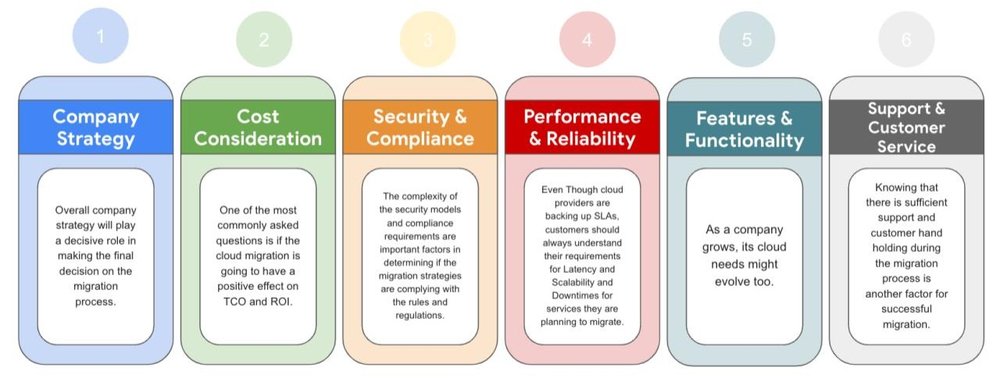
Best practices for planning your modernization or migration project
Migrations have been occurring in enterprise IT for decades. As a result, most organizations are familiar with migration or modernization processes (e.g., mainframe to x86 servers, SQL workloads to NoSQL, Hadoop framework adoptions, and many more).
When planning your own projects, it can be useful to frame your approach according to the following four categories:
-
Opportunity evaluation:Identify and quantify the opportunity and business case, then begin driving stakeholder alignment. Activities like due diligence and discovery can offer insights into the overall IT landscape to properly map out the various cloud-based options.
-
Foundation and planning: A fundamental key in a successful migration or modernization project is to set a solid foundation for cloud infrastructure. Determine and prioritize which workloads are ideal to migrate to the cloud and plan on how to migrate them.
-
Migrate and validate: Execution, validation, and retiring old systems are all essential steps in migration projects. Start with the workloads that are most ideal for the cloud and then plan subsequent projects based on business value, technical priority, and cloud-propensity. Analyzing and evaluating at each step enables fine-tuning for upcoming migrations.
-
Optimize and operate: After migration, you will need to operate and optimize the workloads you moved to a new environment. Adopting cloud-based operations to monitor and understand workload performance is a very important step in any cloud migration process. Customers who don’t go through this process can easily become overwhelmed with the cloud cost and complicated cloud environments.
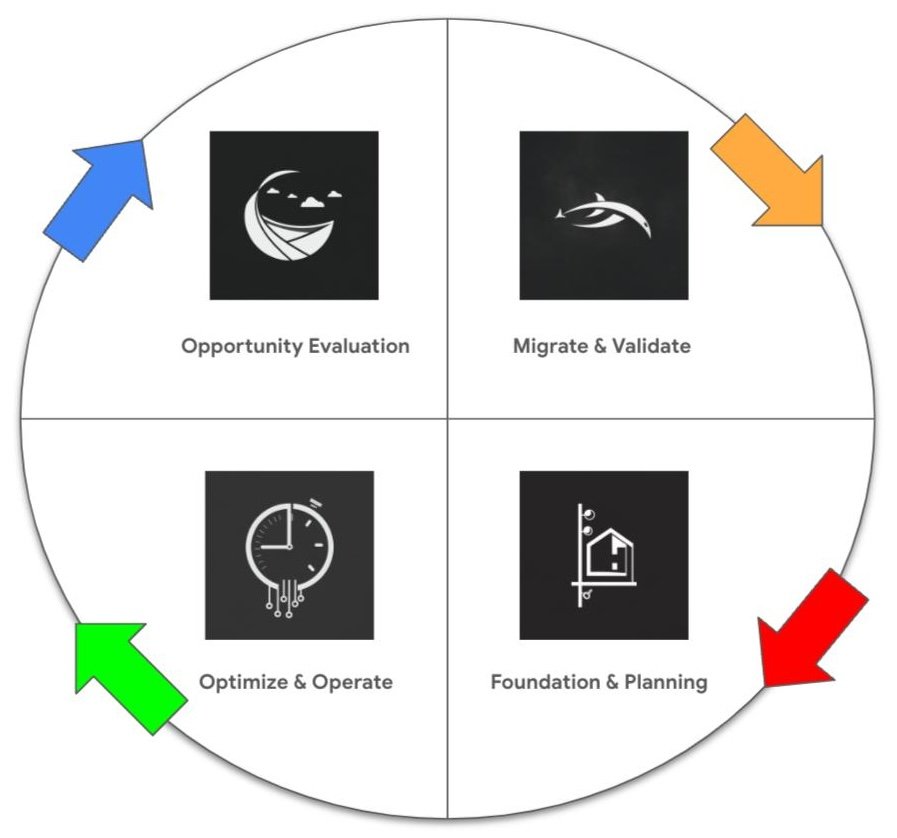
Modernization and Migration Loop (images created by Gemini)
Regardless of the process, migration approaches tend to follow a similar pattern and share similar characteristics. For instance, we’ve found that it’s important to highlight people, process and technology elements when planning projects — all key factors that can contribute to a successful migration. Here are some examples to consider for each element:
-
People: Aligning stakeholders, building skills, and managing resources
-
Process: Harvesting best practices, tracking processes through a governance model, or defining and monitoring well-defined OKRs
-
Technology: Identifying technical gaps, prioritizing migration workloads, and building proper project landing zones with adequate financial, security and compliance controls
A well-run migration process creates a flywheel effect, where learnings and experience gained from migrating workloads compound to refine the business case, bolster the foundation, accelerate subsequent migrations and make it easier to optimize workloads over time.
Drawing on the article’s insights and my own field experience, I strongly recommend considering a modernization path for your data workloads if possible. Serverless technology offers compelling benefits that can significantly reduce your TCO and boost the ROI of modernization efforts. These benefits include cost savings, enhanced security, improved performance and scalability, access to the latest technologies, and increased agility and innovation. By choosing modernization, you can quickly realize these substantial gains, just like one of our many customers did.
Google offers a Database Modernization program to de-risk your migrations by offering end to end guidance and support with tools, resources, best practices and incentive funding. Please visit this link for more information and to apply for the program.
Thank you for reading! Have a question or want to chat? Follow me on LinkedIn and Twitter.

